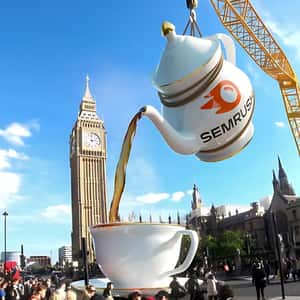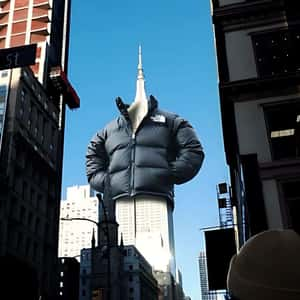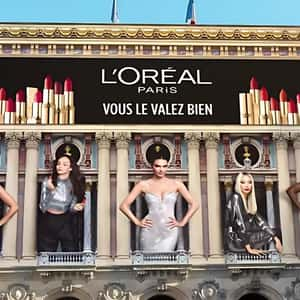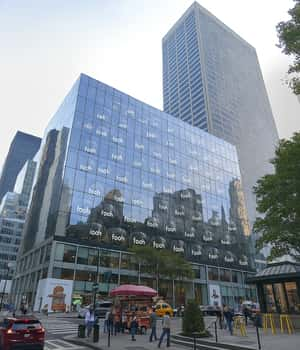Top 5 Overused CGI elements in FOOH
From parachutes to hot air balloons, these CGI elements have been run to the ground. Here’s how to avoid copy-paste CGI and stand out instead.
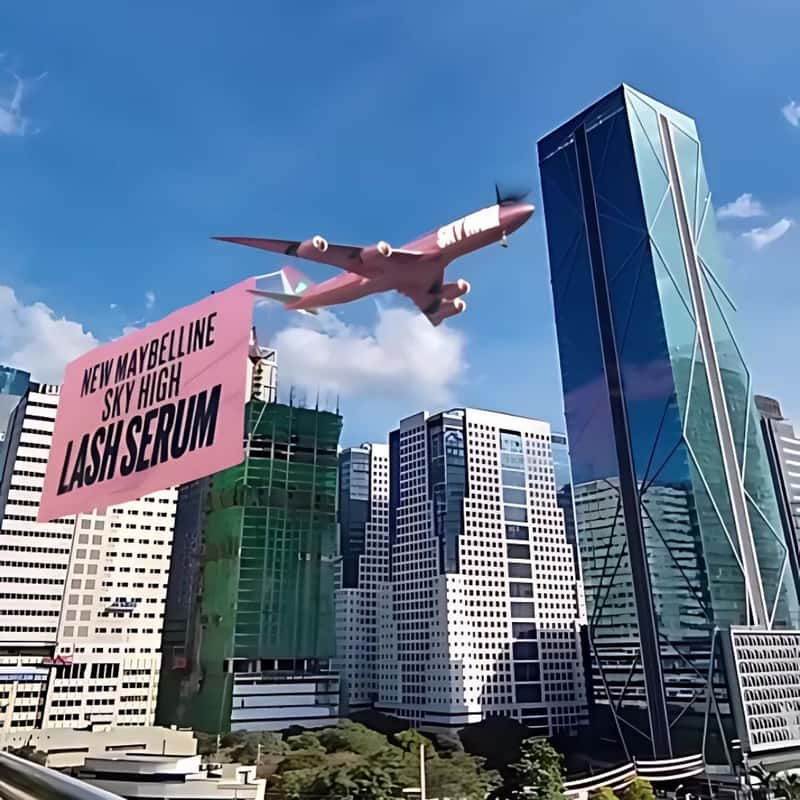
If you’ve seen FOOH ads, you likely notice some CGI elements that show up a lot. These elements have become the go-to formula for many campaigns.
Fake Out Of Home Advertising has become a popular choice for brand marketing. So, it’s no surprise that certain CGI elements are becoming as clichéd as the word “authentic” in brand decks.
But here’s the catch. They’re not bad because they’re CGI or because you see them appear often.
These CGI ads feel tired because they lack concept. Often relying on spectacle over substance. In this article, we’re breaking down the top 5 overused CGI elements in FOOH ads. Not to shame them, but to show why they fall flat and what you can do instead to make your next campaign stand out.
5 Cliche CGI FOOH Elements
Due to ad fatigue, online audiences are especially quick to spot flashy gimmicks. And they will scroll past them.
We don’t want that.
So, let’s break down the five most overused CGI elements in FOOH — and explore how to avoid falling into the same trap.
1. Hot Air Balloons
CGI hot air balloons have quickly established themselves as the go-to visual for FOOH ads that want an “uplifting” or “dreamy” feel. If your idea doesn’t have a clear, unique connection these floaties can seem random.
Just spectacle without context. Pretty, but forgettable.
What to try instead: Ask yourself: what’s the emotional or product truth you’re trying to lift off the ground? Build from that. Sketch ideas and brainstorm with your team. Use tools like Midjourney or ChatGPT to explore new directions. Create mockups first, then move on to 3D.
For example, this great FOOH ad for Starbucks reimagines hot air balloons as giant drinks and pastries floating over Singapore’s skyline – tying the visual directly to the product and National Day campaign. So, you don’t have to limit yourself to the usual balloon shapes; when the asset reflects the story you’re telling, even a cliché format can feel fresh again.
Once your concept’s clear, you’ll need to execute it. This guide breaks down the tools pros use to turn ideas into a good FOOH ad.
2. Banners
You’ve seen them: waving in the sky, stretched across streets, or hanging off buildings. They’re often used to simulate impact or scale. But more often than not, they scream template and uncreative.
Especially when your message is vague or interchangeable with a hundred other campaigns. (Think of the typical OpenMagic templates we reviewed here — quick to use, but easy to spot.)
What to try instead: If you’re going to use a banner in your FOOH ad, make it feel like your own. Can your message only work on a banner, in that location, for your brand? If not, rethink it.
Take this Hyundai ad, for example. The banner isn’t just slapped on for scale — it unfolds into a full beach scene, setting up the story before the car literally drives out of it. It’s a clever way to make the banner essential to the reveal, not just a background detail.
That clip racked up over 15M views and 85K likes on Instagram. It shows how even familiar formats can break through – when the branding is intentional and the message is tailored to the moment.
3. Helicopters
CGI helicopters can be a great way to signal something big — urgency, arrival, or a sense of occasion. And when tied to a clear idea, they work. The problem is, they’ve been done A LOT.
This makes new executions feel less fresh or surprising. An audience might feel creative fatigue from seeing the same visuals over and over again.
What to try instead: If you’re set on using a helicopter, ask yourself: Why this, and not something else? How does it fit into the bigger story or campaign?
In this FOOH ad for e.l.f. Cosmetics, a helicopter flies over Mount Rushmore to stick a giant pimple patch on George Washington’s face, then peels it off to reveal clear skin.
The helicopter ties directly into the story and product idea. And that’s what made people watch, share, and talk about it, getting over 1 million likes on Instagram.
4. Drones
Drones are everywhere in FOOH. They give ads a sleek, modern feel, making them the go-to choice for “this is the future.”
That’s fine. Until everyone’s future starts looking the same.
Try instead: Use drones to do something—not just hover. Consider what they symbolize: innovation, precision, and the future.
Check out this great example: e& Group’s FOOH ad. A drone zooms in on a moving goal post while Manchester City players score in mid-air.
The drone fits right into the action. It turns a simple soccer practice into a fun, tech-filled story. No wonder it pulled in over 2 million likes on Instagram.
5. Parachutes
Parachutes make for a fun entrance. Something big floating down from the sky feels like an event. But with FOOH, “dramatic” fails to guarantee that something will be memorable. Most of these executions lack a reason for the parachute to be there.
No clear concept, no tension, no payoff.
Do this instead: A good parachute moment needs a reason to exist. Is your brand about precision? Is this a long-awaited drop? Use that as your starting point. Then design the moment to land with purpose.
A good hook grabs attention in the first two to three seconds. It’s ideal, especially since most viewers leave by the 3-second mark. That’s about 35% of your audience lost if you don’t offer something worth watching.
Need more great examples that make use of these cliché CGI elements? Check out the biggest collection of FOOH ads in our ads library here for more inspiration.
Final thoughts
FOOH isn’t meant to be repetitive advertising – it’s built on the idea that you can make anything happen. Its biggest USP is creative freedom. But with that freedom comes the responsibility to be intentional.
Before reaching for spectacle, start with a clear idea. The best FOOH ads tell a compelling story, feel unmistakably on-brand, and hook curiosity from the very first frame.
And while these five CGI elements have become cliché and sort of the poster children for FOOH ads, it’s not necessarily bad to use them. Sometimes the banner or hot air balloon is the right visual.
Even cliché elements can hit hard when they’re used thoughtfully, tied to a smart concept, and made to feel uniquely yours.
Audiences are sharper now. They’ve seen the parachutes and hot air balloons already. What gets them to stop scrolling is when it feels fresh. When the visual has real meaning. When it’s clever, or weird, or perfectly in tune with your brand.
Visit our Library to find new, inspiring FOOH Ads!
And if you need more inspiration, browse by Focus Impact Score (FIS) in the FOOH Library to see how top brands made their campaigns unmistakably theirs!
